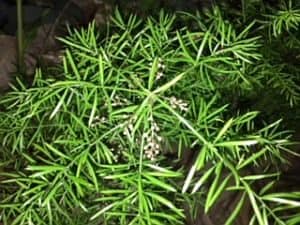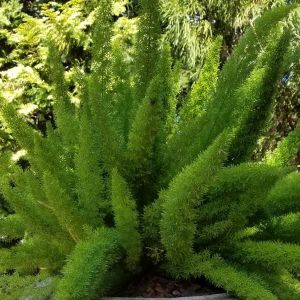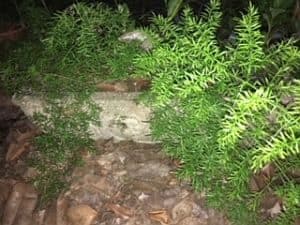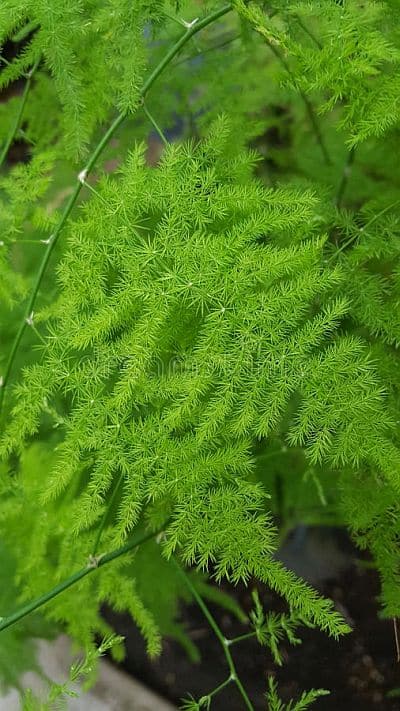
(Photo: dreamstime.com)
Asparagus Fern
It looks like a fern. It’s not a fern at all. It gets its’ name because of its’ fern-like appearance. The scientific name is Asparagus densiflorus or Asparagus aethiopicus. It is in the same family as asparagus (Asparagus officinales) but is not edible. This plant is of South African origin. The needles are modified flattened stems called cladodes. The true leaves are hidden along the stems.
There are more than 300 species of Asparagus densiflorus but the most popular is ‘Sprengeri’ which is open and frothy in appearance, it has arching stems 18 to 34-36 inches long. The leaves are dark green with 1-inch needles.
Asparagus densiflorus ‘Meyers’ is the foxtail fern. The upright stems look like thick foxtails. Mature plants produce tiny white flowers which give rise to green berries that turn red. This one looks best on table tops but can reach to 10 feet long. Looks great in hanging and tall container as well. Can be trained up a trellis or other support. You can cut back the long stems to maintain a denser growth.
Asparagus setaceus or lace fern is also sold as A. plumosa but looks different than Asparagus densiflorus and looks delicate with flat leaves but I don’t find it to be delicate at all. When it is young, the stems grow up and bend at right angles on the tip. When it reaches adult form, it becomes a climber with stems to 10 feet long bearing “fronds” at various points along the length of the stem. Often time I have to turn the stems downward as they get longer or you can train it up a trellis. Mature plants produce tiny white flowers which give rise to green berries that turn black.
Asparagus myriocladus, also called the ming fern resembles a small pine tree which grows 4 to 5 feet with arching stems. It has dark green stems with fine foliage.
I like to use these hardy plants in hanging basket along the porch when it gets really hot as they can take the heat and bright sun. They prefer medium to bright light and do well inside also. They work great when I go on vacation as I’ve left them for 2-3 weeks at a time. I swap my flowering baskets out for these and I don’t have to worry about them looking neglected.
Repot Asparagus fern plants when they become crowded with roots push up in the container or annually as the roots grow fast and take up the pot and replaces soil. Propagation by division or from seeds. Birds like the seeds and will disperse them as well. Roots systems are fibrous with bulbous tubers which grow into a dense mass when crowded and may require a sharp knife or a saw to divide. Needles along stems can scratch skin. My experiences with these ferns is that they have no pests or diseases except some yellowing, which is easily pruned off when the plant is under stress, but they can take a lot of stress. I lost some of my asparagus ferns for the first time due to this past winters’ long and hard freezes. Fertilize periodically during the spring and summer. Water thoroughly from the top or sit pots in water when soil becomes very dry. Asparagus ferns are considered invasive in some areas such as the state of Florida.
Submitted by Karen Blackburn
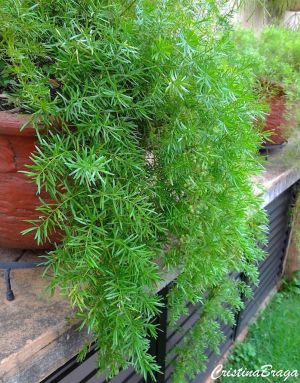
(Photo: Cristina Braga)

